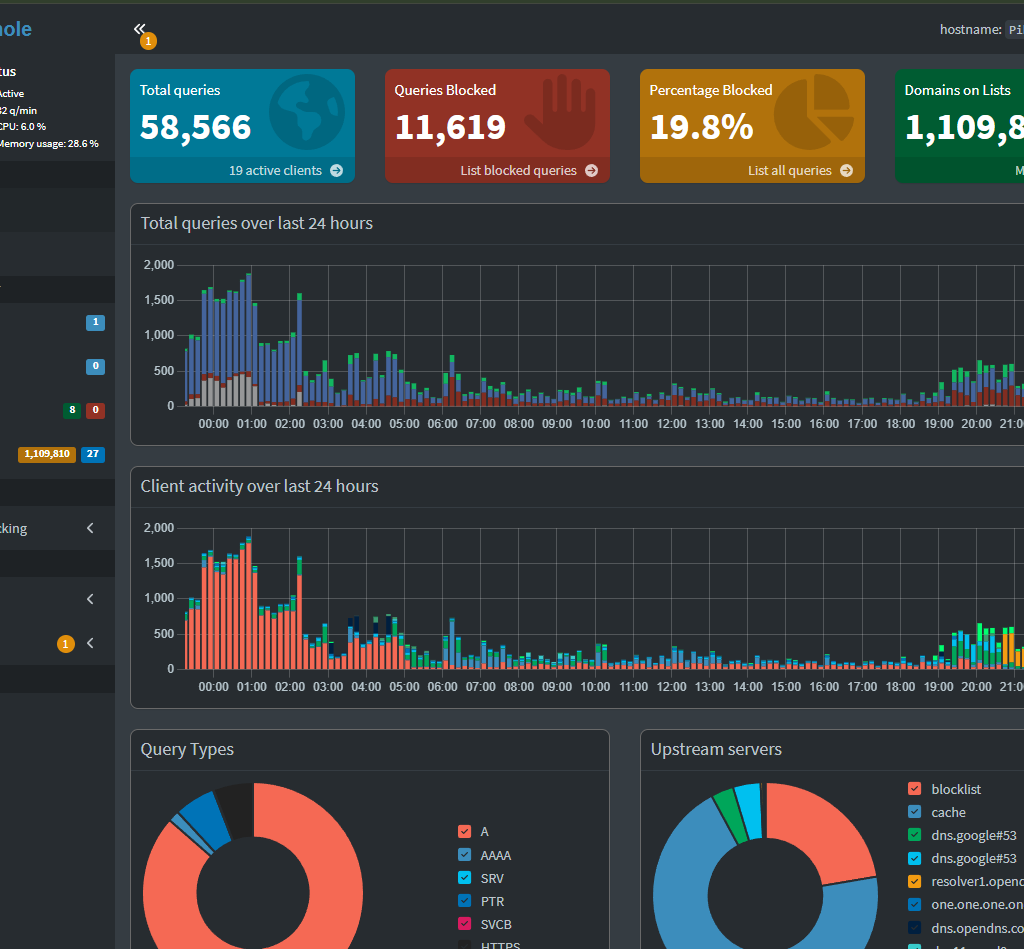Pi-hole, the popular open-source software for network-wide content blocking, just released the Pi-hole v6 update. It has a redesigned interface, many performance improvements, and more.
Pi-hole allows you to block certain websites, domains, and content at the network level using a DNS proxy with customizable lists, eliminating (some of) the need for similar filters and security tools on individual devices. It’s like AdGuard DNS but it’s designed to run on your own hardware—even an affordable Raspberry Pi board, as the name implies.
The new update includes a web interface that is “completely overhauled with settings split into Basic and Expert modes,” and native HTTPS support with the ability to use custom or auto-generated certificates. You can also now subscribe to allowlists (also called ‘antigravity’), not just blocklists.

Pi-hole has also reworked its configuration files by “consolidating multiple settings files into a single, richly commented toml file, making it easier to manage and understand your settings.” Your settings will be automatically updated to the new format if you’re migrating from v5.
The development team has also made some under-the-hood changes to Pi-hole. The pihole-FTP binary now has its own REST AI and embedded web server, so lighttpd and PHP servers are no longer required to be running at the same time. The Docker container is now based on Alpine Linux, which has shrunk the image size and is “opening up possibilities for future system support.” The previous Docker image was based on Debian and has a compressed download size of 113 MB, while the new image with Alpine is just 38 MB.
You can check out the documentation to learn more about Pi-hole and set it up on your own local device. Personally, I’m still happy to keep using Pihole with pivpn on my single board computers and it’s great to see Pi-hole continuing to improve.
Bolster your Pi-hole Instance with
OSSMalta’s Community Blacklists
Some frequently asked questions:
How to Upgrade to Pi-hole v6
For Bare Metal Installations:
- Back up your current configuration.
- Upgrade using the command:
pihole -up. - During the upgrade, you will be asked if you want to disable lighttpd. If you aren’t using it for anything other than Pi-hole, disabling it is recommended.
For Docker Users:
Environment variable management has changed, so be sure to check the updated documentation before upgrading.
The Docker image now runs on Alpine Linux instead of Debian.
Recommend any Good DNS Blacklists?
Yes, We’ve listed them along side the local (Maltese) Blacklists found here, you may also submit urls to be added tot he list after validation by using the contact form, Our Socials, or by email at soc at ossmalta.eu
Oh no… something broke / crashed…
Sadly this happens from time to time here are some things you may try:
some remedies and commands mentioned below are for based on Debian/Ubuntu, unless specified.
How can I get my pi to resolve GitHub so that it can fix or reinstall pi-hole?
Change the DNS servers on the pi manually to (for instance) Cloudflare Public DNS 1.1.1.1 + 1.0.0.1 and try again.
sudo nano /etc/resolv.conf
# Generated by resolvconf
#nameserver 127.0.0.1
nameserver 1.1.1.1
Save + update, and restore the file. It should also restore itself after a reboot.
Error updating Pihole (FTL Error: URL not found)
This seems to be a bit ambiguous and the CLI it self will tell you to reach out to the pihole support team with a debug log – while this is recommended, remember it is community based and replies/feedback may be slower than what you expect from a company, in the mean time here are some documented workarounds:
check that your Ubuntu / Debian / Raspbian / Diet Pi system is up-to-date:
sudo apt update
this command will list the updates that are needed
sudo apt upgrade
this command will apply the updates that where listed by the previous command
sudo apt autoremove
this command will clean the system from left overs of any depreciated packages
sudo pihole -up or sudo pihole -r
-up will re-run the upgrade/update script, while -r will run the recovery/reconfig script (follow each commands onscreen instructions)
check the Pi-hole forums
Visit https://discourse.pi-hole.net/ and use the search bar to see if anyone may have already had a similar issue and if it was resolved. sadly this error is vague and commonly shows up when a major version change is released







